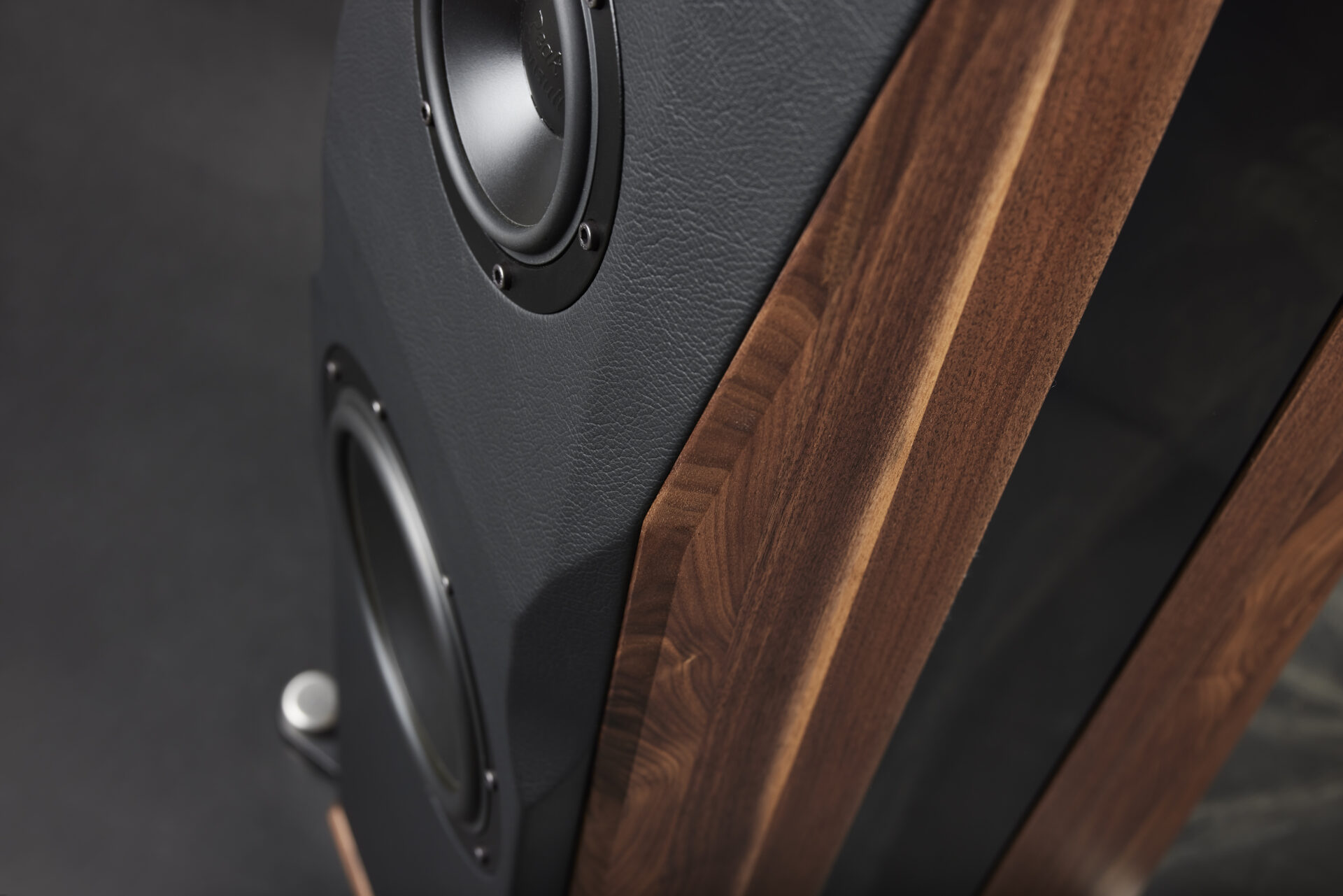
Take three layers of HDF/MDF and glue them together with a lossy adhesive compound and you end up with that familiar construct, a constrained layer – or, in this case, layers. The idea is that the multiple layers of material and interleaving damping create a stiffer, non-resonant structure. What is less widely appreciated is that constrained layer construction can’t kill resonance (unless the damping layer is efficient enough to convert all of the stored energy into heat – and for that you need a lot of material: think the high-volume sandwich used in the Rockport speakers). Instead, what most simple constrained layers do is concentrate the remaining energy that they don’t dissipate at a single, dominant frequency. Consider that in the context of a wide-bandwidth loudspeaker and it’s not a good thing – unless you do something about it.
Which brings us to the third member of the Peak Consult team. Few small companies can afford to invest in the latest, most sophisticated measurement devices and analytical tools – the facilities necessary to really refine the mechanical behaviour of a cabinet. The answer is to contract with someone who can – in this case, loudspeaker design ‘gun for hire’ Karl-Heinz Fink, a man with so many speaker designs and consultancies to his credit that his drawing board is more notch than surface. If you want access to the very latest and most powerful analytical tools (and someone to drive them) then Karl-Heinz is your man. The beauty of the Peak Consult cabinet construction is that by simplifying the resonant behaviour, you make it easier to deal with, in this case through the time-honoured practice of critical bracing. What Karl-Heinz brings to the party is greater insight into the mechanical behaviour of the cabinet (and drivers) creating the ability to calculate precisely the position and size of any brace, controlling rather than adding to the problem – as well as input to other aspects of the design.
The Sinfonia (€45,000 inc 20% sales tax) is the current incarnation of an earlier speaker dubbed the Empress. It is the middle model of the three compact floorstanders. A straight 8” three-way design, it sits one down the range from the twin bass driver El Diablo mentioned above. The first thing that strikes you about this speaker (after you’ve come to terms with its near 80kg weight) is its unusual shape. The bass driver occupies its own, vertical baffle that extends to two-thirds of the speaker’s height. Above that, the mid and treble drivers share a tapered and heavily profiled sub-baffle that cants back, in what has become a familiar arrangement designed to deliver a measure of time-alignment to the three drivers. That baffle is constructed in two parts, from the same three-layer sandwich as the carcass, then wrapped in thick, leather-loo vinyl, which adds a further (admittedly minimal) degree opf mechanical damping.

But it’s the radically tilted top plate and forward sloping rear baffle that afford the Sinfonia its distinctive looks. I’ve seen more than a few speakers in my time, but I don’t recall any that look like this – although that’s not necessarily a bad thing. That forward leaning stance gives the speakers an eager, alert posture, that actually echoes their sonic character and which (somewhat to my surprise) I find quite attractive. The acrylic inlays on the side panels update the looks and further accentuate the tapered profile of the cabinet, while the ‘leather’ clad rear baffle sports a heavily flared reflex port whose angle of elevation and calibre seem more akin to a trench mortar than an audio application. Internally, separate enclosures for each driver contribute to the extensive cabinet bracing, while the crossover enjoys its own, mechanically and acoustically isolated space. Peak Consult state that, internally, the cabinet has no parallel faces, although the side panels are perfectly parallel. What they are referring to are the front, top and rear panels – in other words, those panels perpendicular to (rather than parallel with) the driver axes. Hence the sloping top and rear panels.
A modern take on tradional virtues…
As well as the hard-wood surfaces, the driver line-up is another facet of the Peak speakers that contributes to what some might consider a ‘dated’ or old-fashioned appearance. I’ve already mentioned the 8” bass unit (so visually different to carbon or Nomex drivers) and both it and the midrange unit use modified polypropylene cones, a material that may have gone beyond “no longer fashionable” into the realms of “deeply unfashionable”, but one that continues to give excellent results in speakers from the likes of Wilson Benesch and Vienna Acoustics. Like everything else in audio, it’s not what you use, but how you use it that counts. The beauty of polypropylene is that it has inherently good self-damping. Judicious additives and careful profiling of the cone can produce superbly smooth mechanical behaviour within the pass-band, with an equally smooth natural roll off. The traditional downside is that it can sound ‘soft’ and ‘slow’. Well – yes, if you get it badly wrong. But working closely with Audio Technology (another spin-off that shares the Dynaudio DNA) has allowed Peak Consult to not only tailor the drivers to their own system requirements, but to optimise the fundamental elements to minimise perceived shortcomings. Engineer a good cone and generating dynamic range comes down to the power and capabilities of the motor driving it. A lot of companies expend effort on the magnet structure in order to generate more power (it is the most visible part) and Audio Technology is no exception. But the drivers in the Peak speakers take things further and look at the voice-coil properties too, augmenting the contribution of the magnetic structure with a denser and far more tightly wound construction in the coil itself. If you think the Peaks are going to sound dynamically sluggish, think again.

